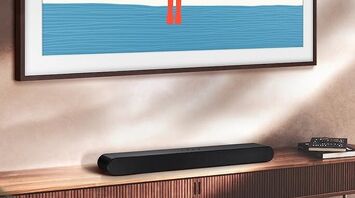How to Choose the Right Soundbar

Upgrading your TV audio starts with choosing the right soundbar. With the rise of wafer-thin TVs, built-in speakers often fall short, especially when watching content like "Wonder Woman" on a stunning 4K HDR display. To fully appreciate such visuals, you need quality audio. A good soundbar enhances your TV's sound, especially for dialogue clarity.
But, with numerous options presented, finding the best soundbar can be overwhelming. Not all soundbars deliver exceptional sound; some are subpar. Features vary, from HDMI inputs for devices to Bluetooth capabilities for music streaming. This buying guide outlines essential considerations when selecting a soundbar for your TV and room.
Buying Guide Cheat Sheet: Quick Tips
- Channel Count: Look for a soundbar with at least three channels. Two-channel soundbars typically quality modestly. Three or more channels create immersive audio experiences.
- Active vs. Passive: Choose an active soundbar as it includes a built-in amplifier, simplifying setup and saving space.
- Placement: Your soundbar should align with TV width. Ideally, position it directly below or above the TV for best performance while ensuring enough space for functionality.
- Connectivity: Most soundbars offer Bluetooth and Wi-Fi for music streaming. Check for HDMI-switching as well.
- Authorized Dealers: Buy from certified sources to receive warranties, service, and support. Our expertise in customer service status is academic.
- Best Options: For curated selections, refer to our list of the Best Sound Bars of 2023.
Assessing Value: Are Soundbars Worth It?
Many people choose soundbars due to space constraints for full home theater setups. Slim and stylish, soundbars save space while delivering quality sound. Authentic home theater typically requires more components — including an amplifier, subwoofer, and at least five speakers. While soundbars greatly enhance audio, nothing rivals a dedicated home theater system. For those seeking a straightforward upgrade, soundbars strongly outperform built-in TV speakers.
Sound Bars vs. Sound Bases
Though focused on soundbars, know that they come in both types — soundbars and sound bases.
Sound Bars: These long, thin devices fit under or mount above TVs, enhancing dialogue and sound quality. They effectively clarify voices, letting even the quietest dialogues echo boldly. Many feature a separate subwoofer for additional bass.
Sound Bases: Designed to sit directly under the TV, they often house more powerful amplifiers and drivers, reducing the need for a subwoofer. Although they're harder to find, their enhanced bass may be satisfying.
Key Purchasing Considerations
- Where Will It Live?: Assess your space before choosing. Soundbars easily mount or sit under TVs. Ensure enough gap beneath your TV if seated. Proper spacing is crucial.
- What Size Should You Get?: Match the soundbar width with your TV. While aesthetics matter, ensure connectivity compatibility, especially with older models.
- Active vs. Passive: Passive soundbars need an external amplifier; active soundbars function independently. Most users benefit from the simplicity of active units, making them a solid choice.
- Types of Channels!: Channels indicate individual audio sources. Two-channel soundbars support basic left and right channels. Meanwhile, multi-channel options elevate audio experiences significantly — ideal for immersive shows and films.
- Connectivity Options?: Newer soundbars possess diverse connections. Seek HDMI ARC inputs for seamless integration and optical ports for reliable connections. Wireless Bluetooth capabilities advance ease of streamless music.
- Control Mechanisms?: Your new soundbar usually includes its remote, but most can sync with your existing TV remote. Streamline operation with apps included in some models.
Common Queries: Soundbar Considerations
- Adding Speakers: Some models support additional speakers while maintaining a good connection. Often, soundbars also built with wireless rear speakers enhance audio spatial effects.
- Customization: Wireless subwoofers often integrate with soundbars for the better bass response or provide additional ports for personalized setups.
- Need for a Receiver: An active soundbar negates this need, as it possesses built-in controls and processes sounds, further simplifying your setup.
- Existence of Dolby Atmos Support: New soundbars may include technology reflecting sounds off walls and ceilings, simulating surround effects — ideal for enticing experiences.
- What is Cinema Sound? Most soundbars feature settings designed to simulate home theater settings, fostering an engaging atmosphere.
Reinforced Suggestions: Trusted Brands and Audios
Notable soundbar brands include Bose, Sony, Sonos, Klipsch, and Yamaha, assuring durability and quality. Consider options that suit your environment and visuals — all vary by specifications.
Conclusion Note
Your audio experience can change based on the soundbar you choose. Careful research on crucial elements like type, size, and connectivity straightens your decision-making process. Sound enhancement provides vast results by simple improvements, leading to a much richer audio feedback during inspiration from thrilling scenes and beloved shows. Soundbars maximize both artistic expressions and comfortable home viewing spaces. There's no substitute for quality audio, so explore wisely to find the best experience for your TV setup.
Earlier, SSP told how to keep laptop battery healthy: tips for both MacBook and Windows users.



















